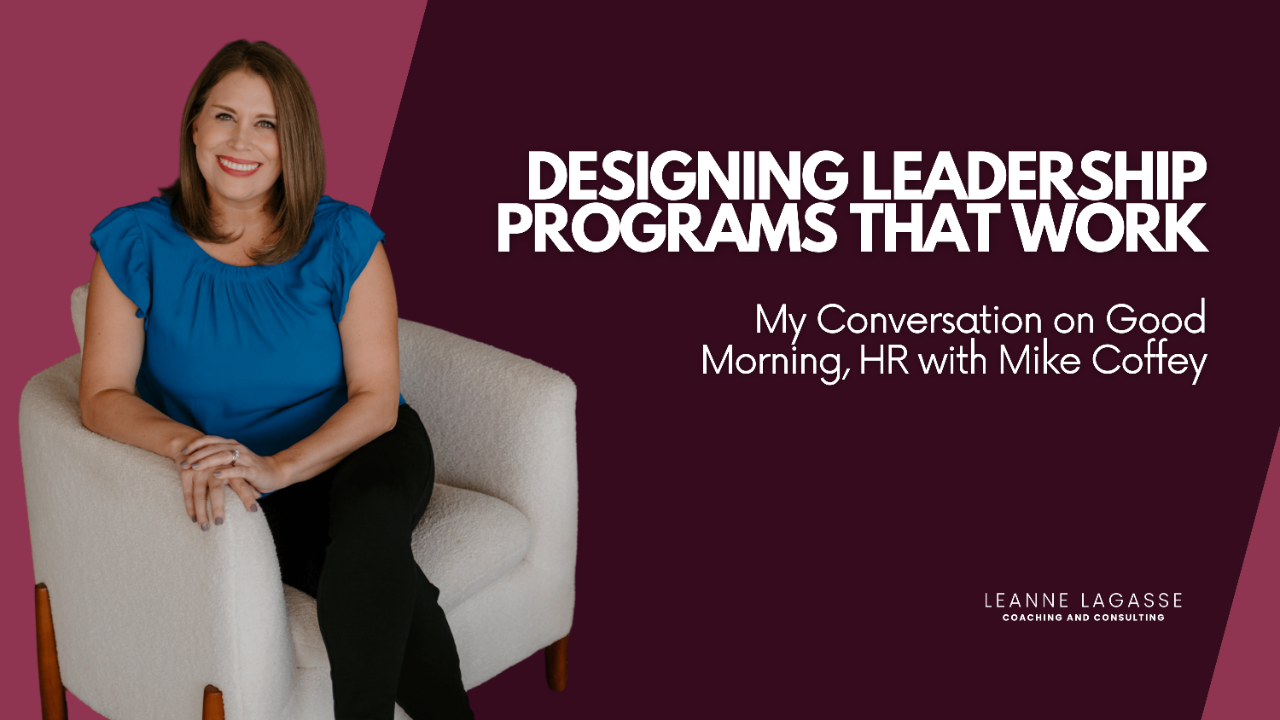Designing Leadership Programs that Work: My Conversation on Good Morning, HR with Mike Coffey

If you’ve ever wondered why so many leadership programs sound great but don’t actually change behavior, this conversation is for you. I joined Mike Coffey on Good Morning, HR to talk about what makes development initiatives stick — and why I believe congruent leadership is the foundation.
👉 Listen to the episode or continue reading for takeaways from our talk:
Why so many leadership programs miss the mark
Too often, leadership development stops at content delivery — a webinar, a slide deck, a quick “training.” Leaders leave with information, but not the practice or support to apply it under pressure.
“It isn’t enough to tell managers what drives engagement. They need space to practice what that looks like in real, day-to-day leadership.”
We identified 3 common gaps:
-
No clear outcomes. Programs aren’t reverse-engineered from the specific results the organization needs.
-
Knowledge ≠ skill. We teach what to do, but don’t create low-stakes reps to build the how.
-
No reinforcement. Leaders aren’t given peer learning, coaching, or reflection to sustain behavior change.
Start with outcomes, then reverse-engineer
When I design a program, I begin with, “What outcomes matter most here?” Then we build a plan that gives managers:
-
Clarity (what good looks like in this culture),
-
Reps (safe practice on real scenarios),
-
Reflection (self-awareness about strengths, mindsets, and blind spots),
-
Reinforcement (peer cohorts, coaching, and follow-ups).
The manager effect you can’t ignore
Gallup’s research shows the direct manager accounts for ~70% of the variance in engagement. If you want stronger engagement and retention, equip frontline leaders first — with practical communication and people skills, not just theory.
The 70-20-10 that actually moves behavior
According to the 70-20-10 rule, people managers learn and grow from 3 types of experience, following a ratio of:
-
70% Challenging experiences & practice
-
20%: Supportive relationships (coaching, mentoring, peer cohorts)
-
10%: Formal learning (courses, lectures) — the spark that needs fuel
The takeaway? If your program is 90% slide deck and 10% discussion, flip it. Don't underestimate the importance of other learning modalities.
Congruent leadership: the alignment that builds trust
Congruent leadership is the alignment between how you see yourself and how your team actually experiences you. When leaders close that gap, trust rises — and results follow.
Try these reflection prompts with your next one-on-one:
-
Where might my communication be creating hesitation or rework?
-
Do my actions match what I say I want (clarity, autonomy, initiative)?
-
What low-stakes practice could help me build the skill I’m trying to grow?
Practical next steps
-
Listen to the full conversation: Good Morning, HR — Episode 222 (HRCI/SHRM pros: this episode is pre-approved for recert credit — details in the show notes.)
- Get a Copy of The Congruent Leader: https://a.co/d/gmRqYBz
- Learn More about My Book: https://www.thecongruentleaderbook.com/
Hey, thanks for being here and for watching/reading. My goal is to consistently create content that's engaging, applicable, and inspires you to continue learning and growing as a leader. If you have ideas for future content or any questions at all, please shoot me an email at: [email protected].
Get My Newsletter Delivered Right to Your Inbox!
Join thousands of People + Culture Leaders investing in their growth and development each week. 🙌🏻
No spam. No selling your info. Just great content.



